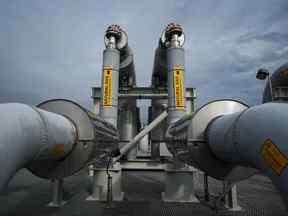ISLAMABAD — The government is preparing to reopen domestic gas connections, but applicants will now be linked to imported LNG supplies at a steep price of about Rs3,900 per mmBtu — nearly four times higher than what households previously paid.
According to officials, the Petroleum Division has sent a proposal to the federal cabinet, seeking approval to lift the years-long moratorium. In the first year, up to 120,000 new connections are planned.
Who Gets Priority?
The first beneficiaries will be those who had already applied, paid “urgent fees,” or received demand notices before the ban came into effect. Around 250,000 such applicants exist, but they’ll be required to submit affidavits pledging not to challenge the revised connection charges or pursue earlier claims in court.
For these new connections, households should expect to pay between Rs40,000 and Rs50,000 in upfront fees, while monthly bills will be calculated at the notified LNG tariff.
Mounting Demand, Shrinking Supply
The decision comes as Pakistan faces a backlog of more than 3.5 million pending applications for new gas hookups. Meanwhile, existing utilities like Sui Northern Gas Pipelines Limited (SNGPL) already ration supplies to households, often limiting availability to just 6–9 hours a day during peak winter months.
Authorities argue that reviving new connections under LNG pricing will ease pressure on the overstretched pipeline system and bring in additional revenue for cash-strapped gas companies. It also allows the state to better utilise surplus LNG, which has piled up due to subdued domestic demand and reduced consumption in “must-run” power projects.
Cheaper Than LPG, But Still a Burden
While the LNG tariff may seem high, officials highlight that it remains 35–40% cheaper than liquefied petroleum gas (LPG), which costs households roughly Rs5,300 per mmBtu. Millions of low-income families currently rely on LPG cylinders, making piped LNG an alternative that is at least comparatively less expensive.
The Bigger Energy Puzzle
The policy shift reflects the difficult balancing act the government faces: imported LNG is draining foreign exchange reserves, while local gas fields producing over 300 mmcfd have been partially shut to make room for LNG consumption. This not only hurts producers — who report weekly financial losses — but also discourages future exploration in a country already struggling with declining domestic reserves.
Energy sector circular debt continues to swell, adding pressure on policymakers to find revenue streams without further destabilising supply chains. By resuming connections, the government hopes to secure steady cash inflows, absorb LNG surpluses, and ease years-long frustration among households waiting for access to the gas grid.
The rollout of 120,000 connections is only the first step, with expansion likely in coming years as authorities attempt to strike a delicate balance between affordability, energy security, and international commitments.
